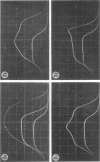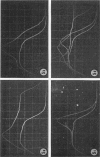Abstract
The processes involved during the passage of a suspended particle through a small cylindrical orifice across which exists an electric field are investigated experimentally for an approximate prolate spheroid in the form of two tangent, rigid spheres (ragweed pollen particles) and for fresh, human red blood cells. Oscillograms of current pulses produced by both types of particles are presented and discussed in terms of particle shape and orientation and the effects of the hydrodynamic field. It is concluded that all the particles enter the orifice with their major axes aligned parallel to the orifice axis (electric field), but that during their passage some are rotated by the hydrodynamic field. Cells with their equatorial plane perpendicular to a radius of the orifice change their orientation with respect to the electric field as they are rotated, the others do not; only in the former case is there any deformation. It is shown that the bimodal or skewed size distributions can be explained on this basis, and that size (shape factor × volume) is actually a normally distributed variable (P > 95%). The average size of samples from 10 healthy adults was found to be 102.7 μ3 with a coefficient of variation of 1.8%. For a volume of 87 μ3, this corresponds to a shape factor of 1.18, an axial ratio (assuming a perfect oblate spheroid) of 0.26, and an equivalent major axis of 8.6 μ. The effect of high electric fields on red cell size distributions is mentioned.
Full text
PDF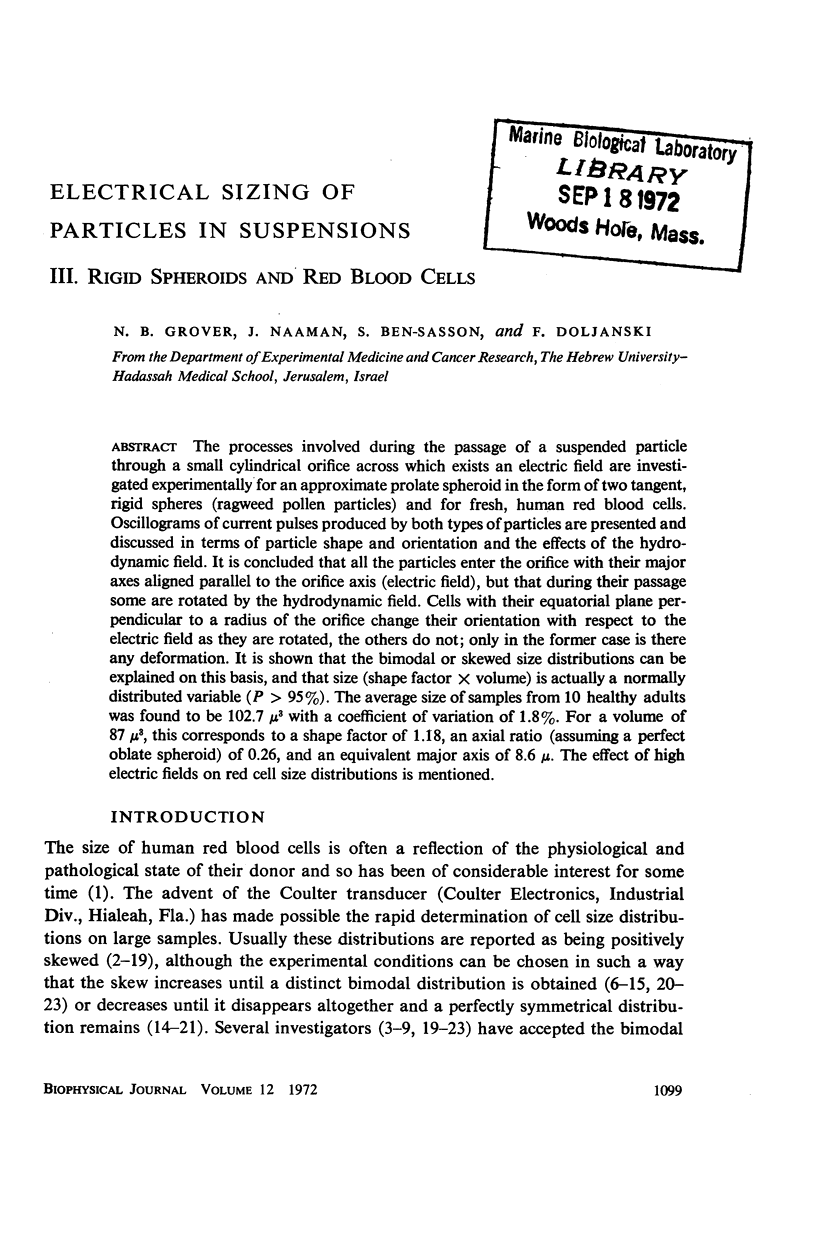
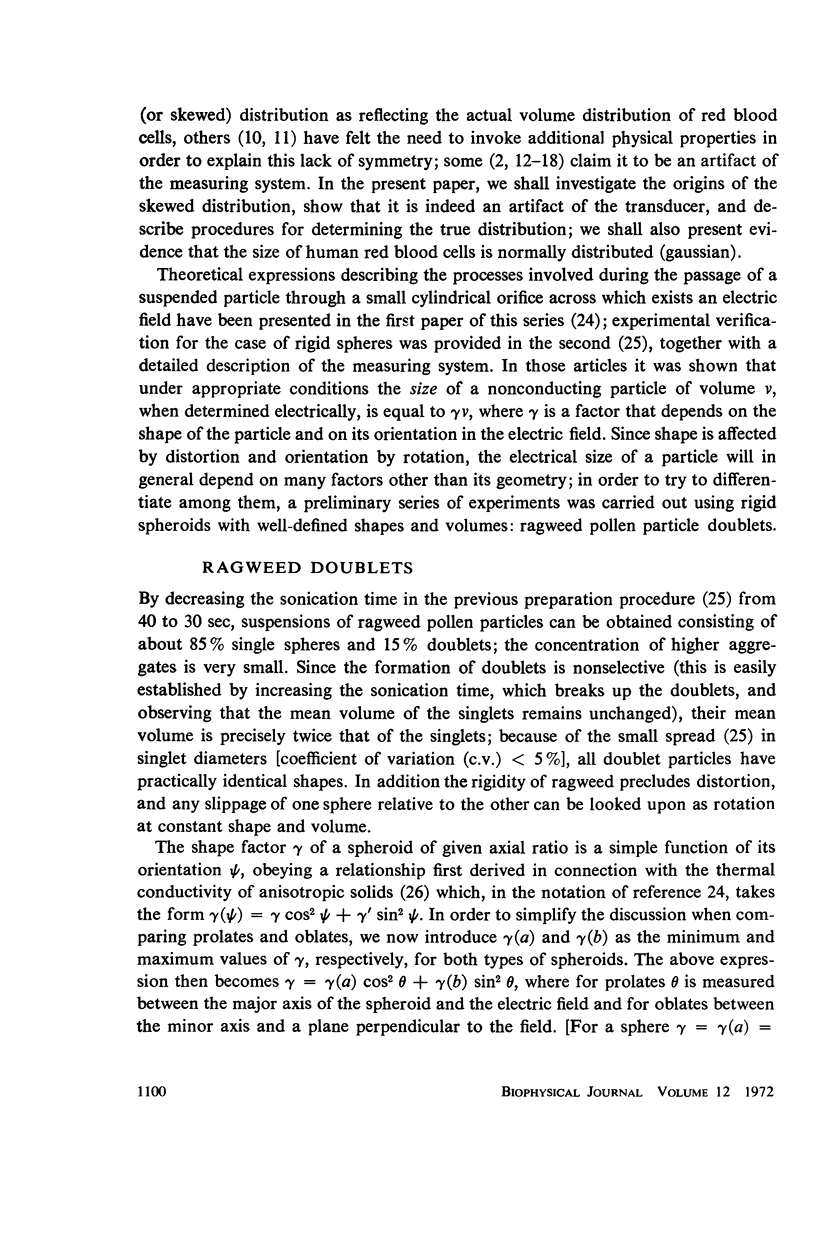
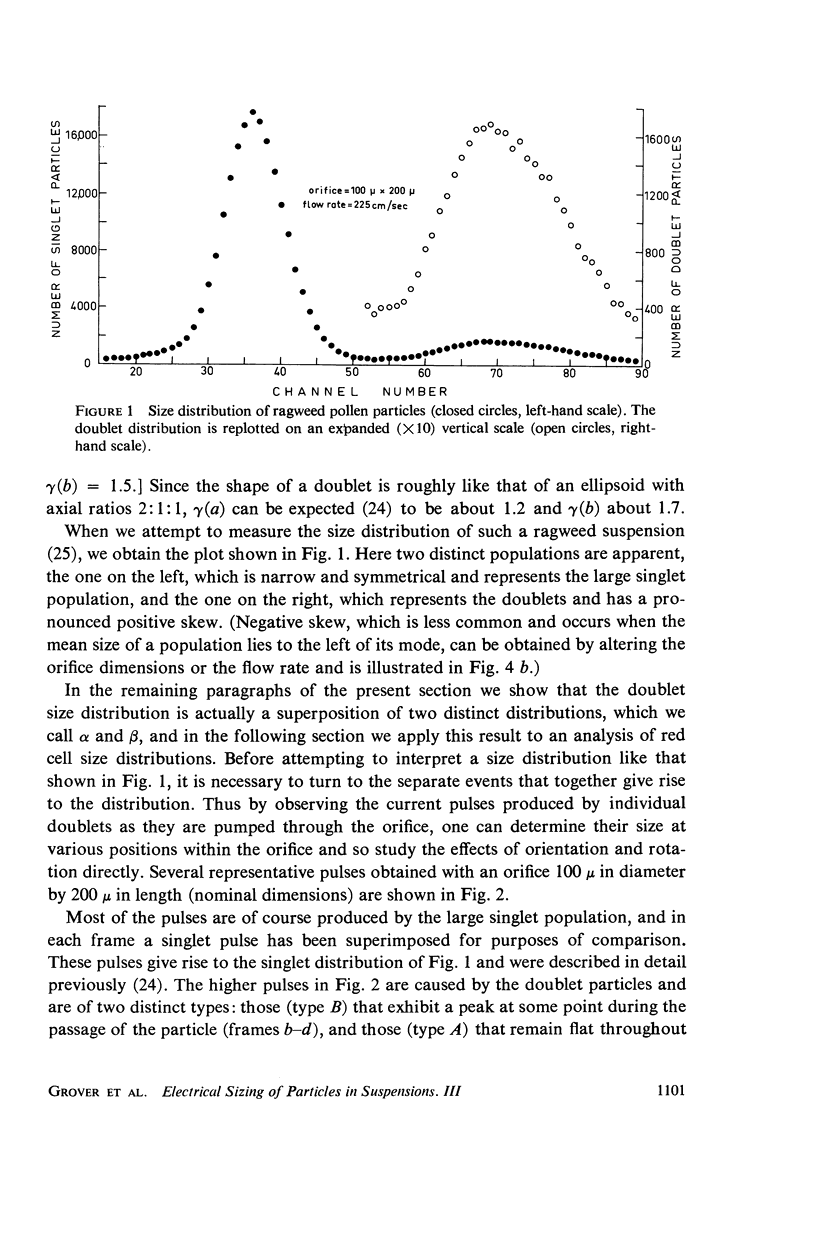
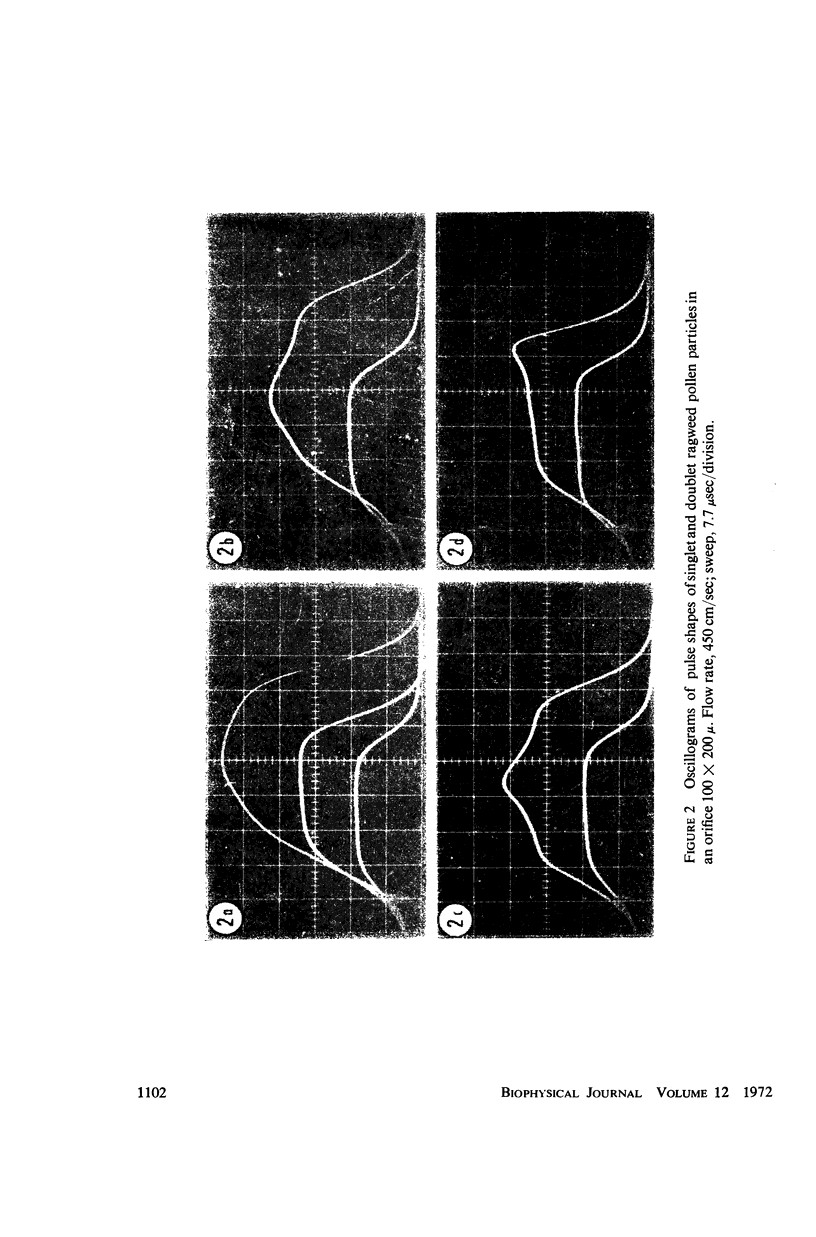
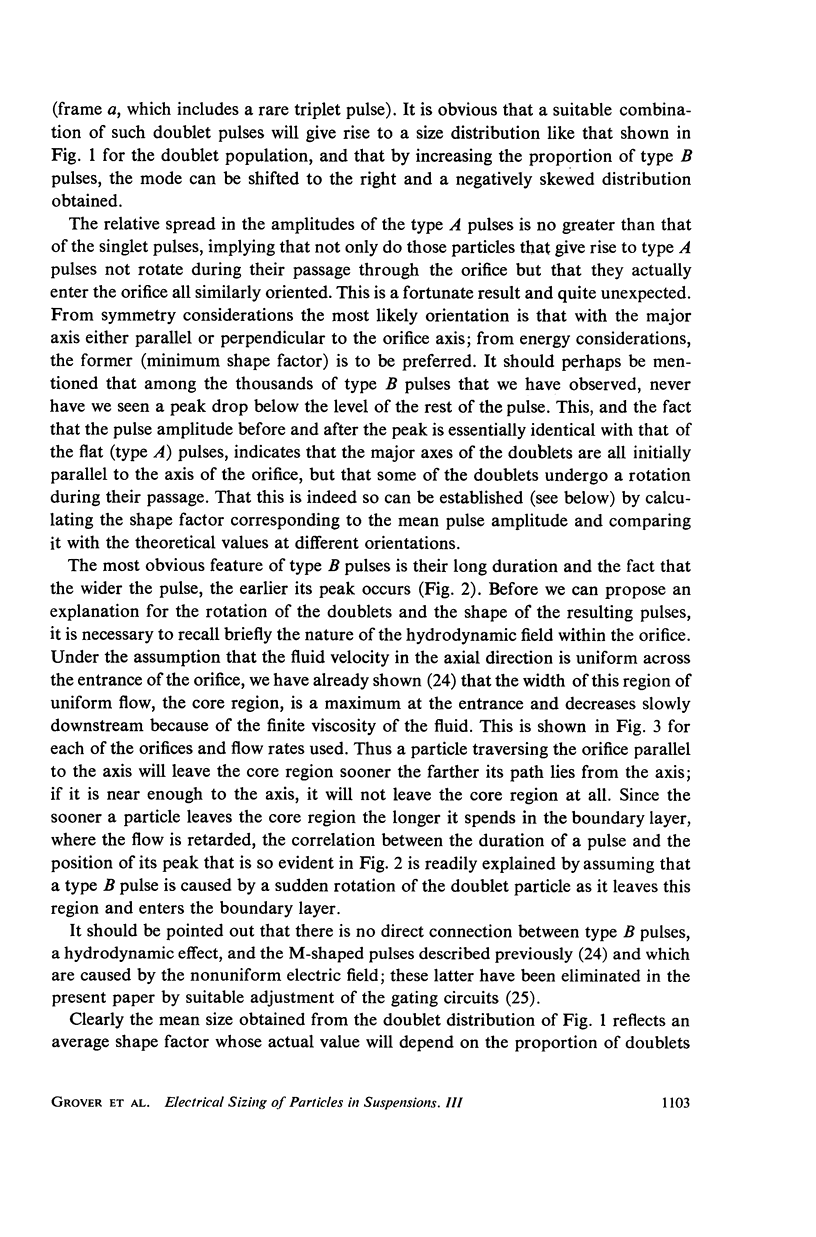
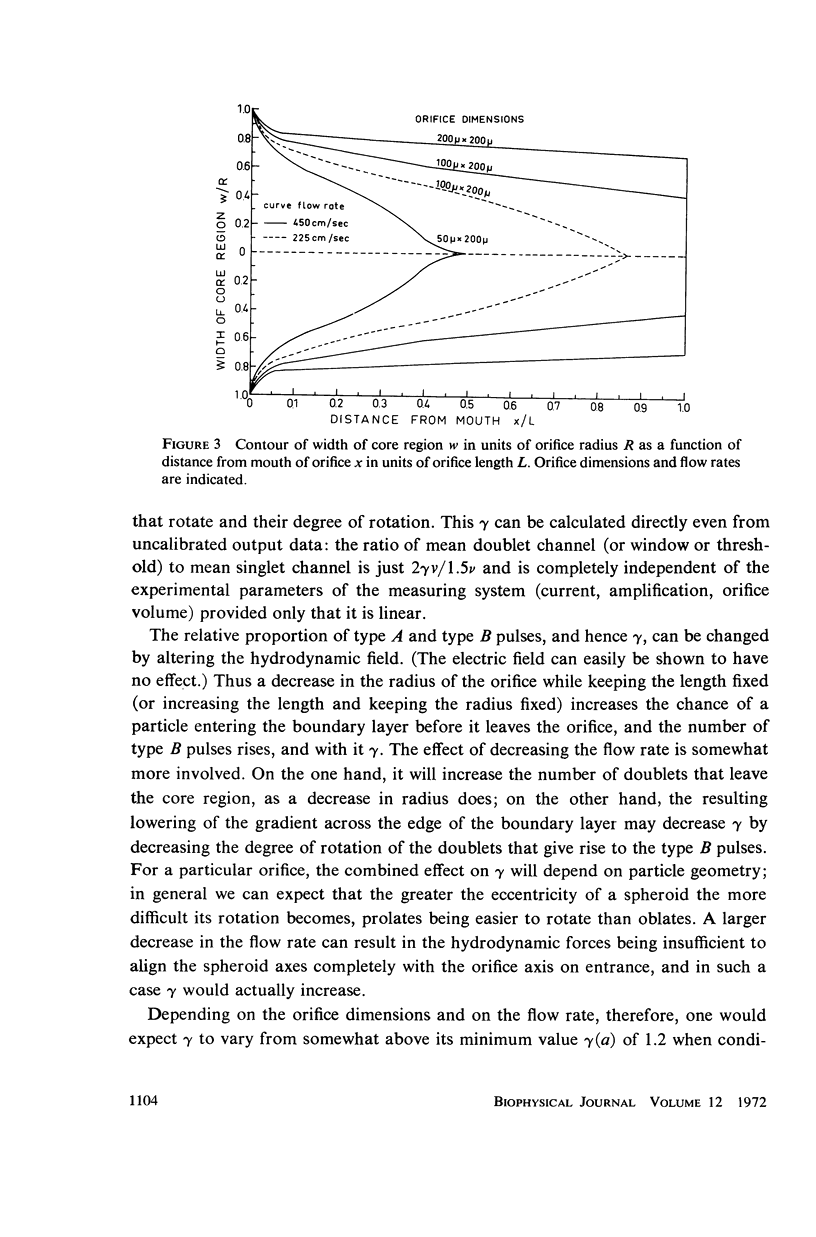
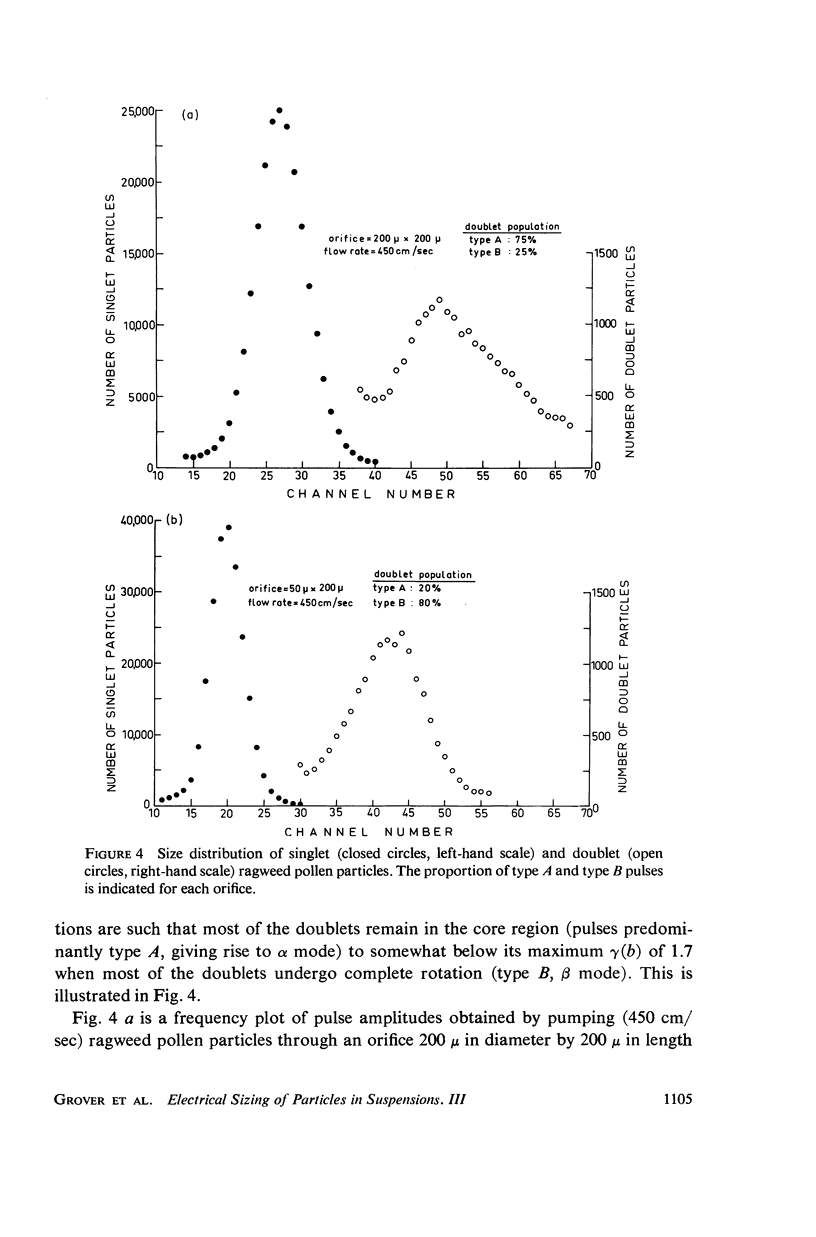
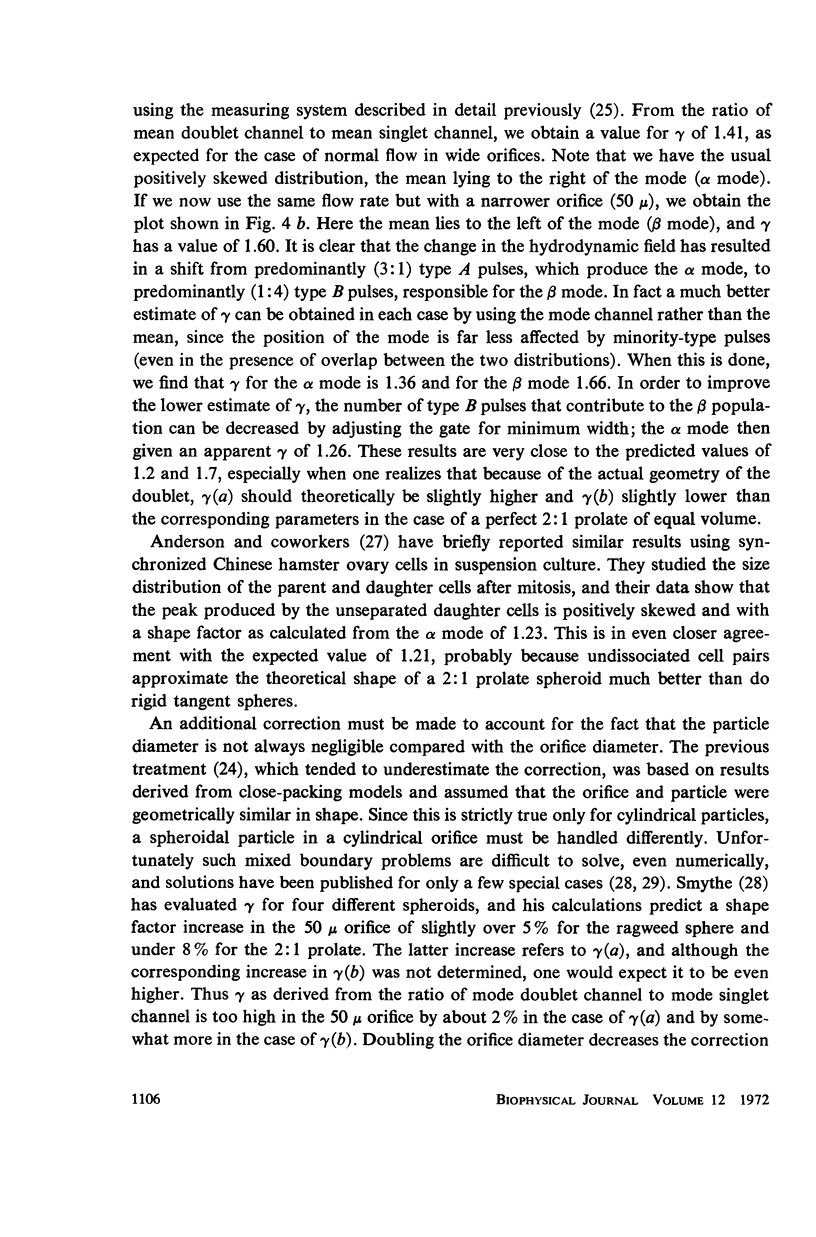
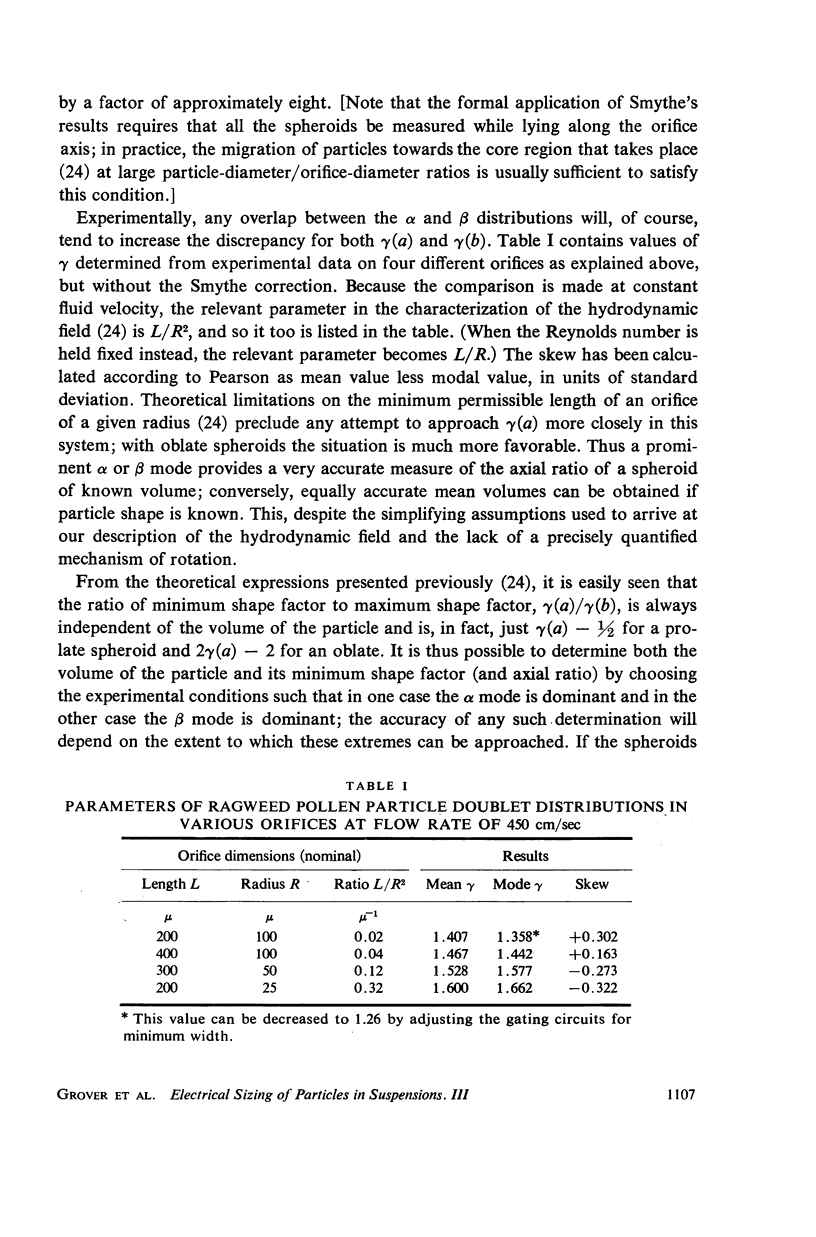
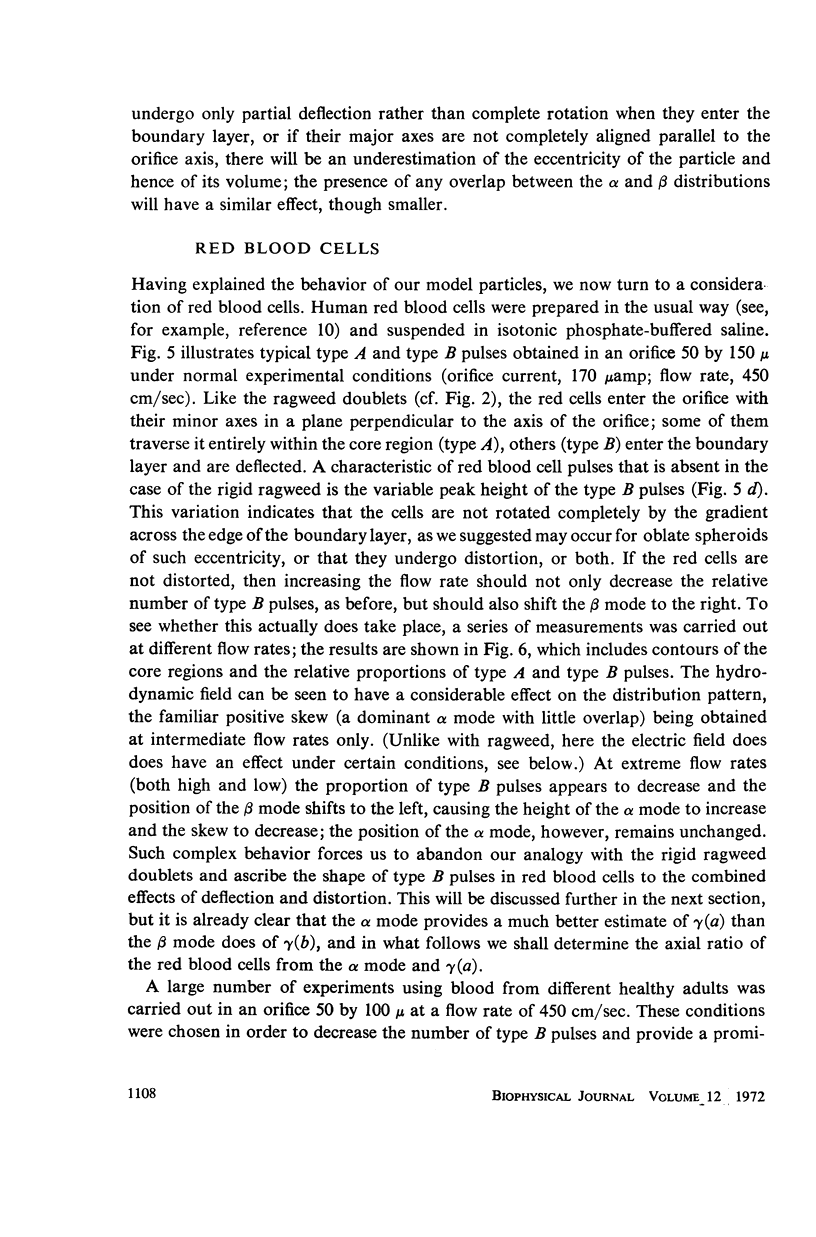
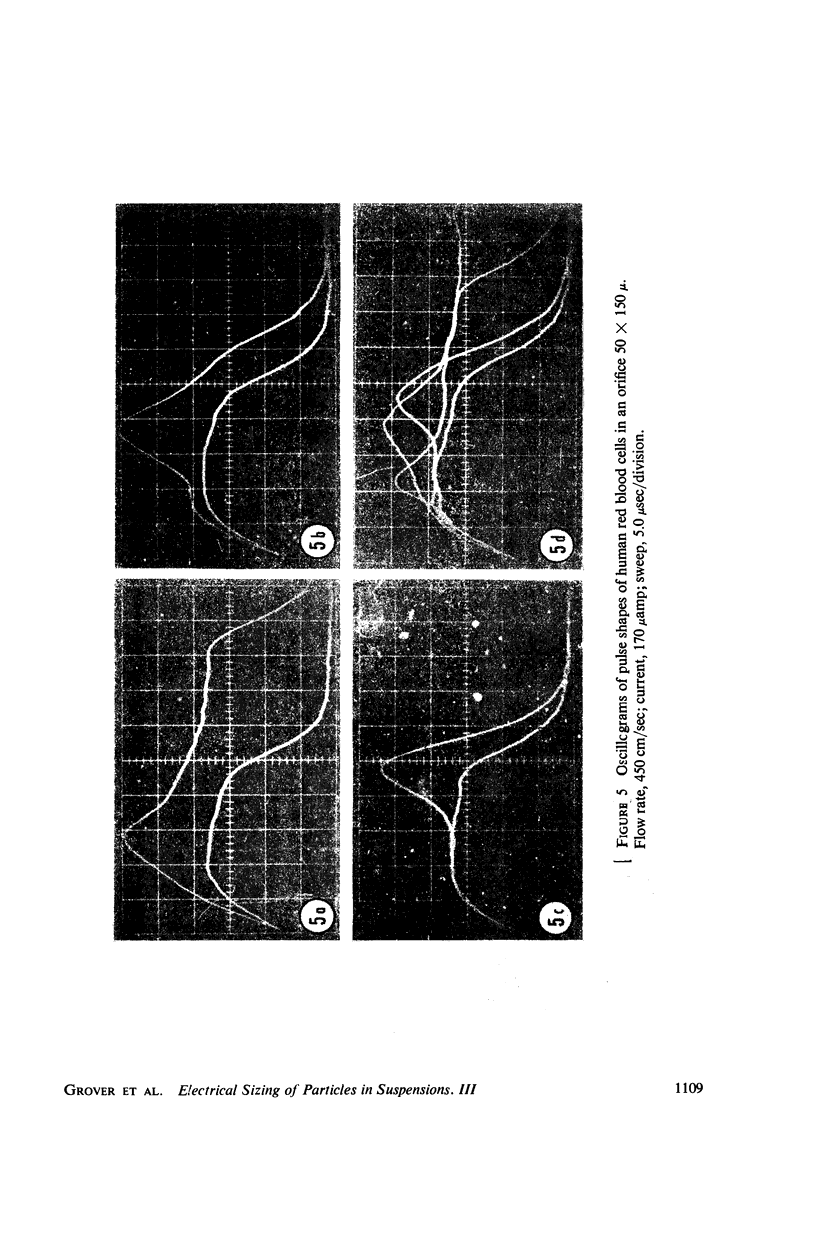
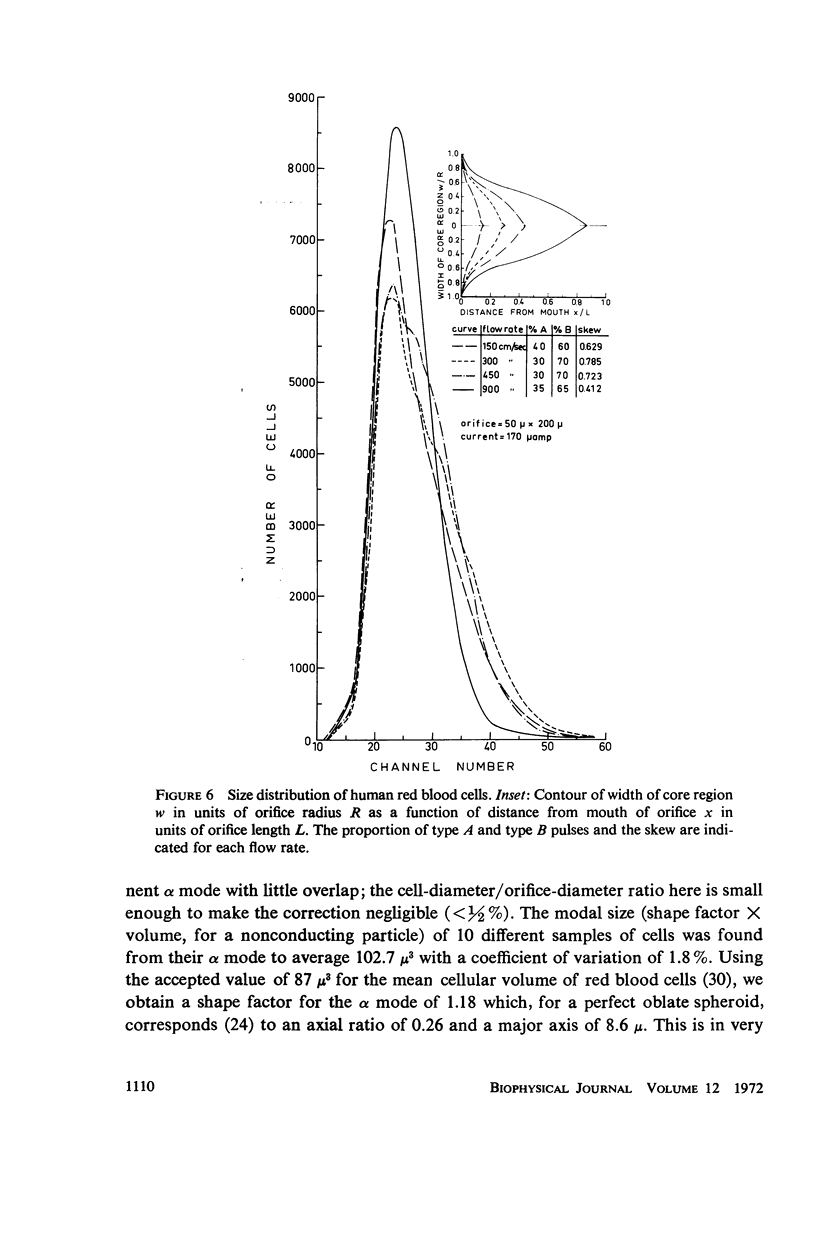
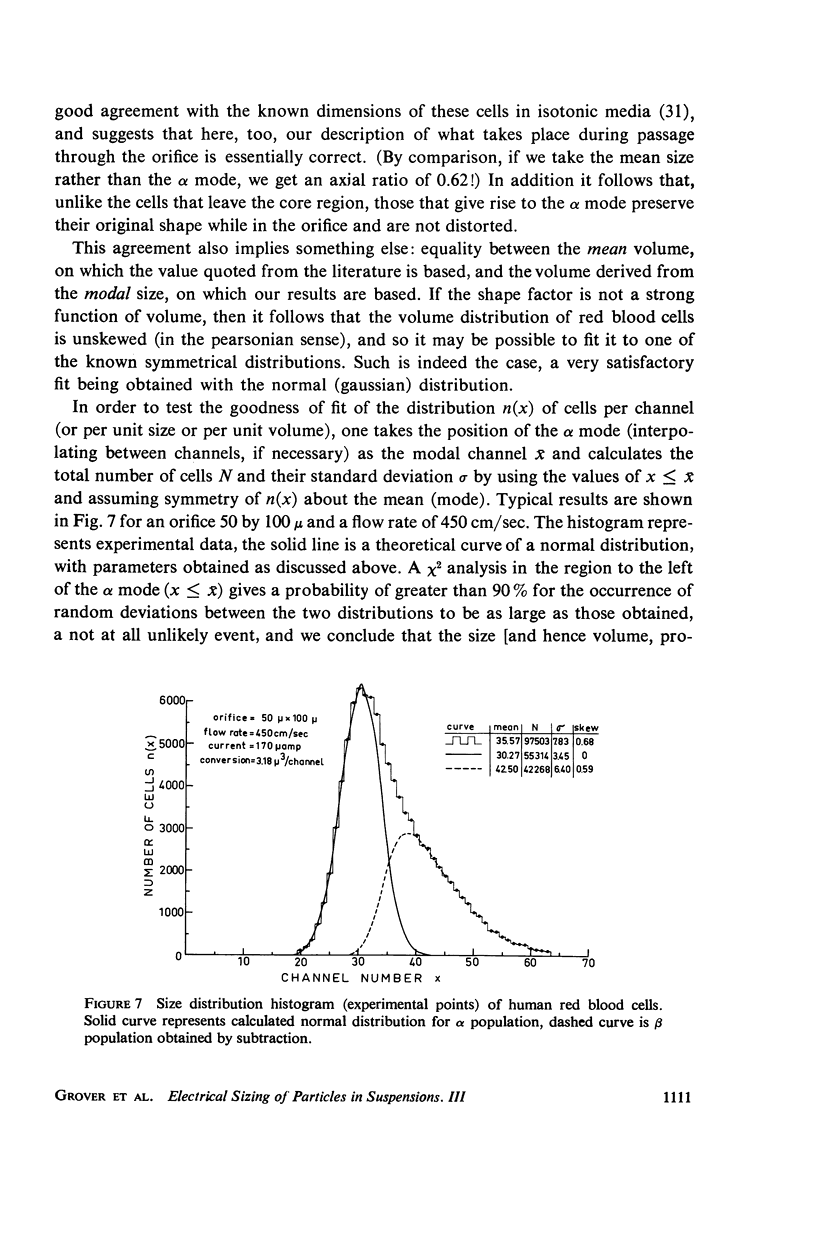
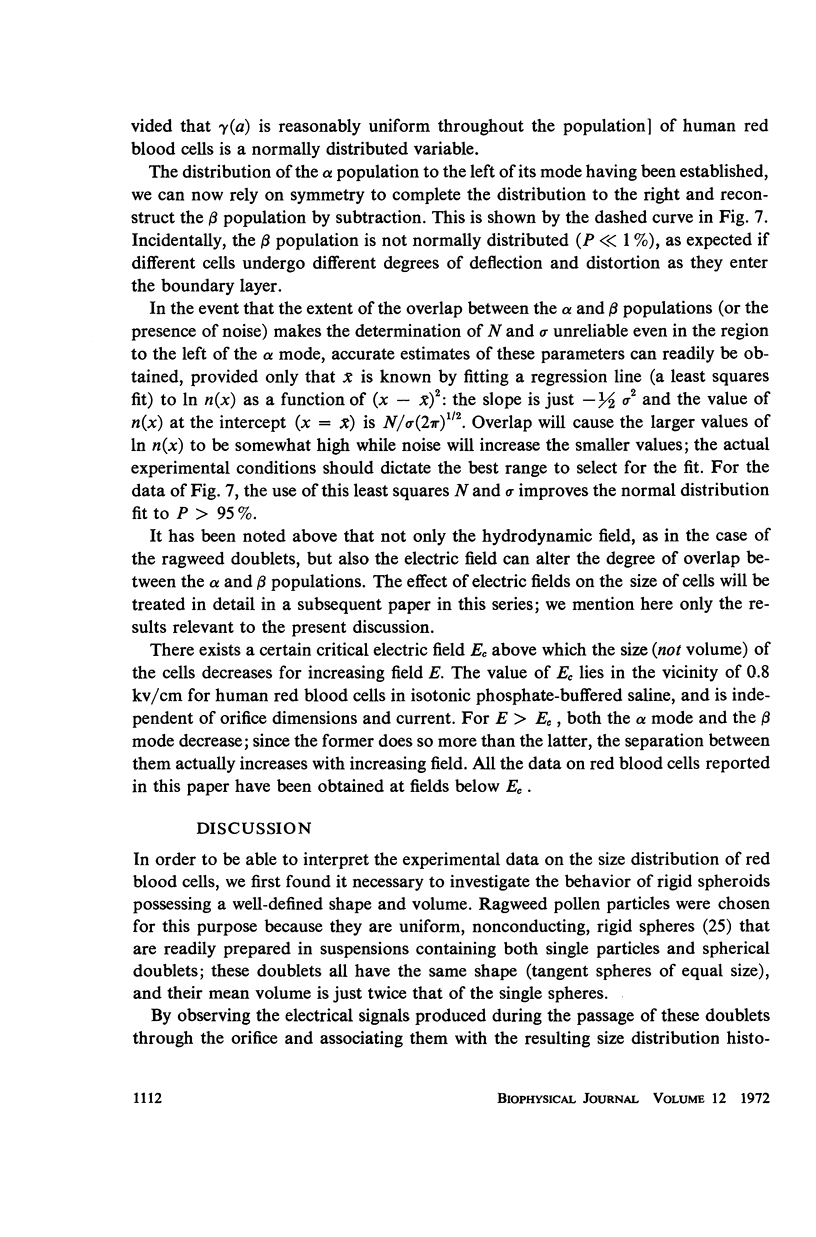
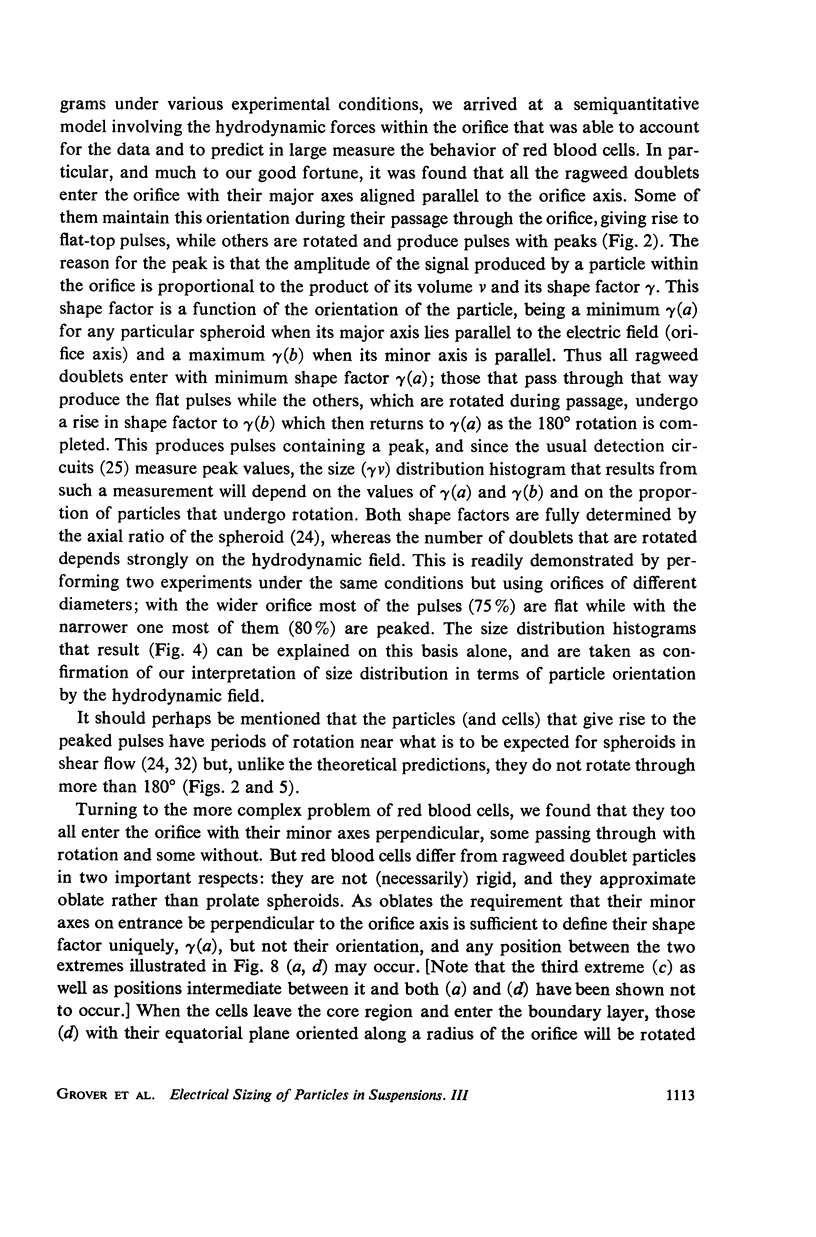
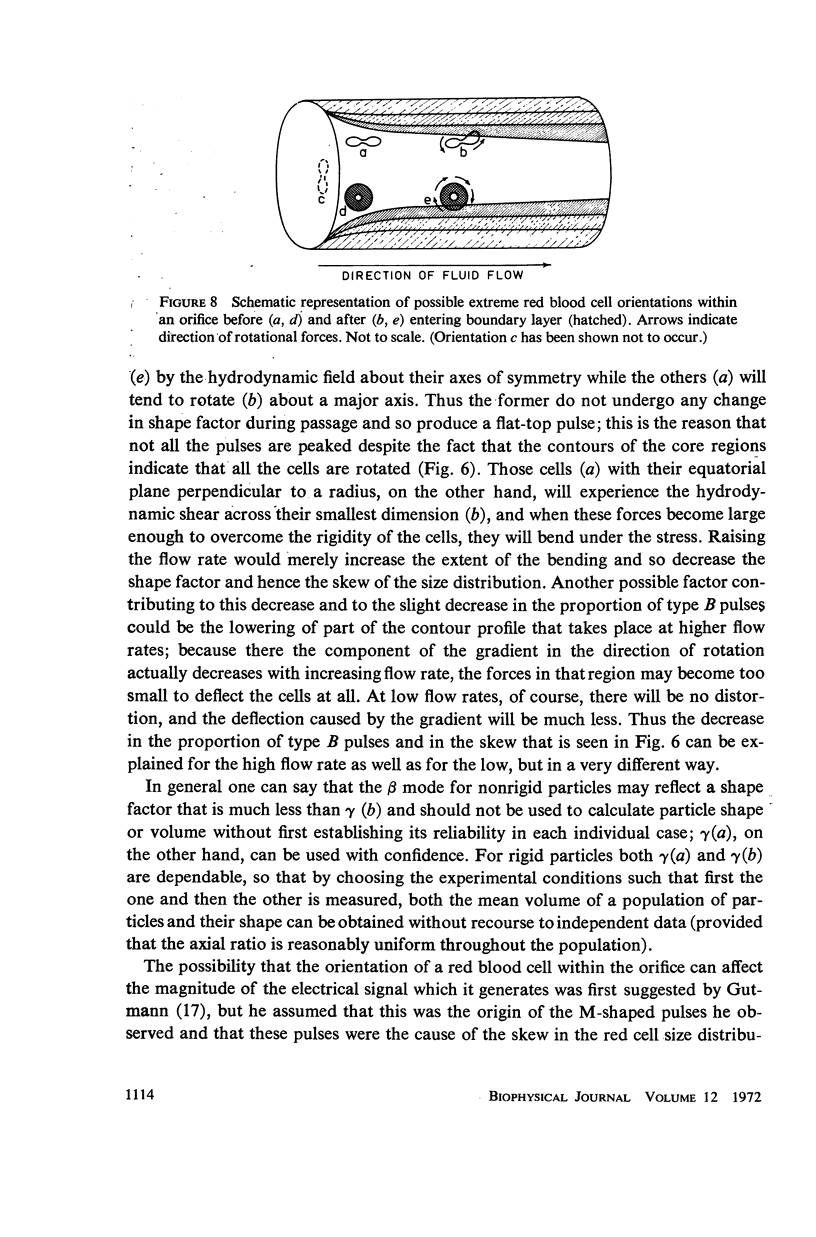
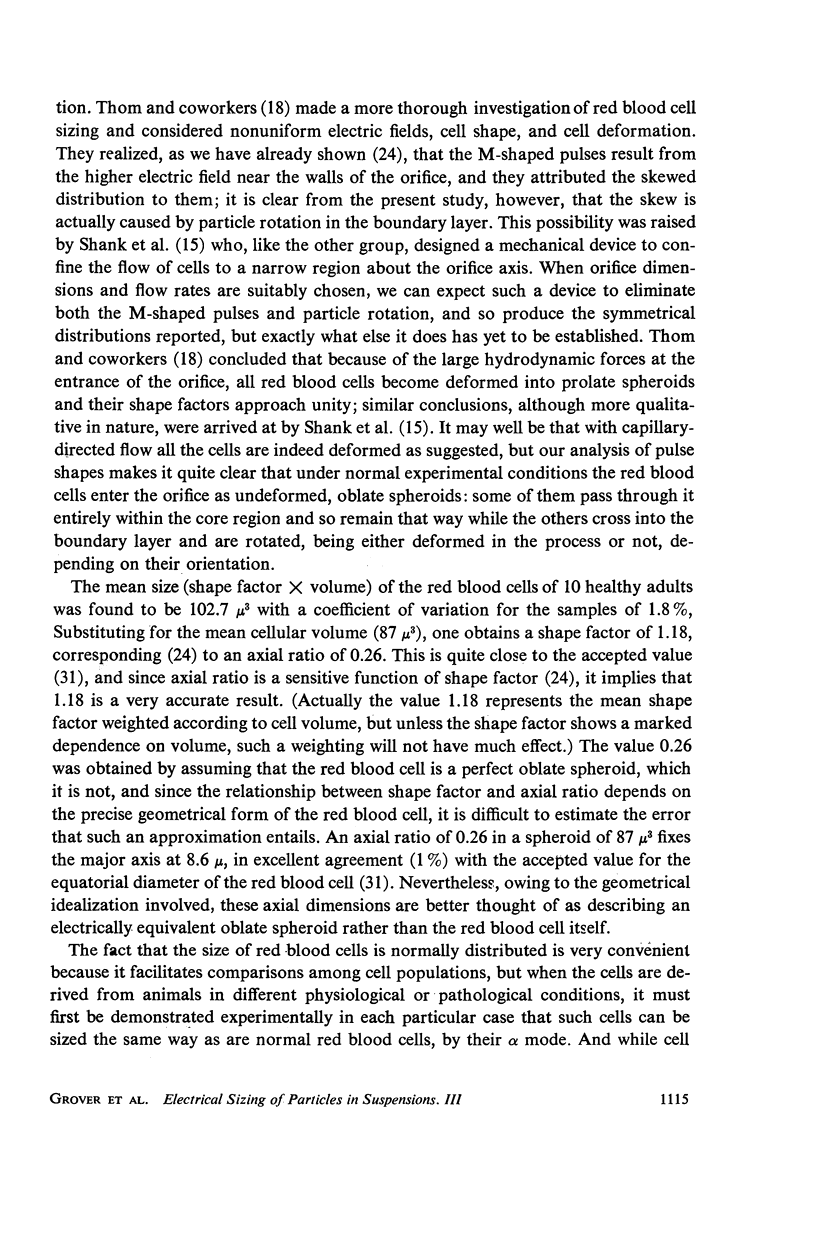
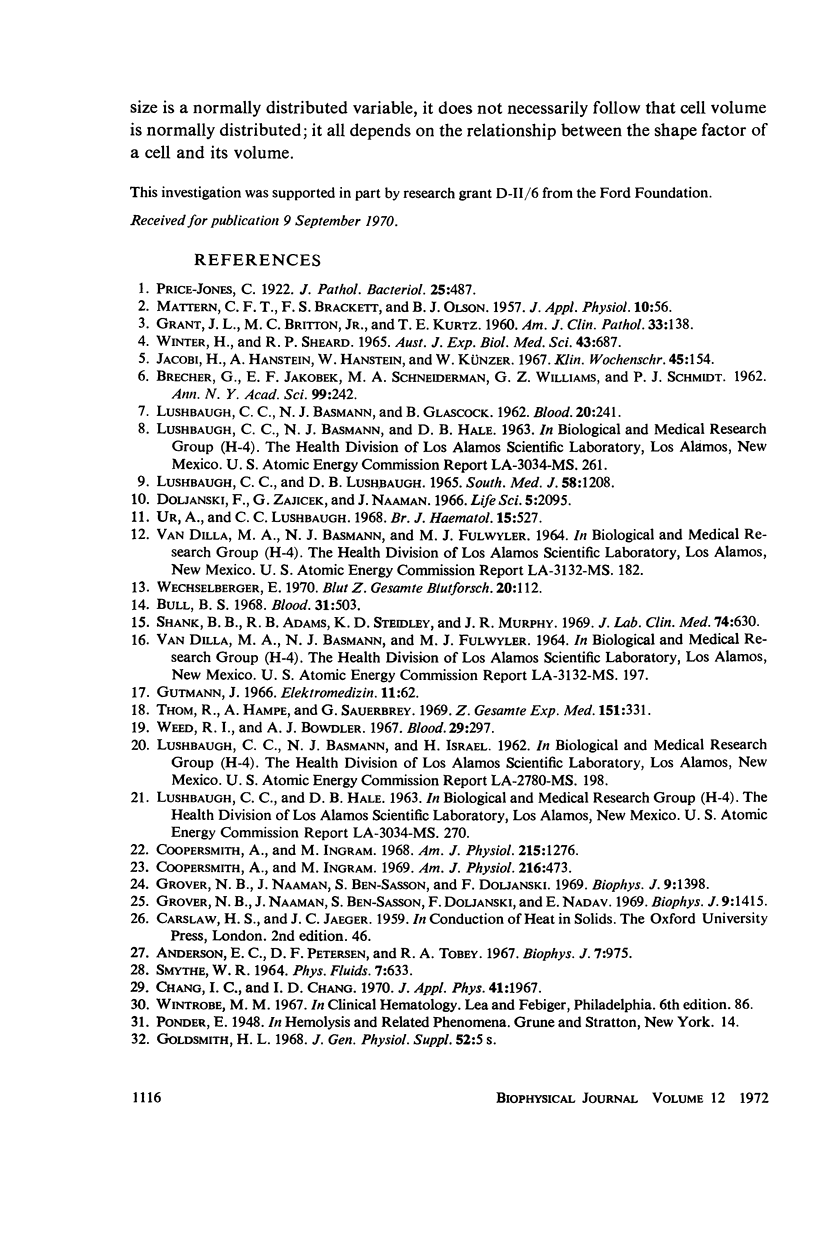
Images in this article
Selected References
These references are in PubMed. This may not be the complete list of references from this article.
- Anderson E. C., Petersen D. F., Tobey R. A. An effect of cell shape on apparent volume as determined with a coulter aperture. Biophys J. 2008 Dec 31;7(6):975–977. doi: 10.1016/S0006-3495(67)86634-7. [DOI] [PMC free article] [PubMed] [Google Scholar]
- BRECHER G., JAKOBEK E. F., SCHNEIDERMAN M. A., WILLIAMS G. Z., SCHMIDT P. J. Size distribution of erythrocytes. Ann N Y Acad Sci. 1962 Jun 29;99:242–261. doi: 10.1111/j.1749-6632.1962.tb45310.x. [DOI] [PubMed] [Google Scholar]
- Bull B. S. On the distribution of red cell volumes. Blood. 1968 Apr;31(4):503–515. [PubMed] [Google Scholar]
- Coopersmith A., Ingram M. Red cell volumes and erythropoiesis. I. Age:density:volume relationship of normocytes. Am J Physiol. 1968 Nov;215(5):1276–1283. doi: 10.1152/ajplegacy.1968.215.5.1276. [DOI] [PubMed] [Google Scholar]
- Coopersmith A., Ingram M. Red cell volumes and erythropoiesis. II. Age: density: volume relationships of macrocytes. Am J Physiol. 1969 Mar;216(3):473–482. doi: 10.1152/ajplegacy.1969.216.3.473. [DOI] [PubMed] [Google Scholar]
- GRANT J. L., BRITTON M. C., Jr, KURTZ T. E. Measurement of red blood cell volume with the electronic cell counter. Am J Clin Pathol. 1960 Feb;33:138–143. doi: 10.1093/ajcp/33.2.138. [DOI] [PubMed] [Google Scholar]
- Grover N. B., Naaman J., Ben-Sasson S., Doljanski F. Electrical sizing of particles in suspensions. I. Theory. Biophys J. 1969 Nov;9(11):1398–1414. doi: 10.1016/S0006-3495(69)86461-1. [DOI] [PMC free article] [PubMed] [Google Scholar]
- Grover N. B., Naaman J., Ben-Sasson S., Doljanski F., Nadav E. Electrical sizing of particles in suspensions. II. Experiments with rigid spheres. Biophys J. 1969 Nov;9(11):1415–1425. doi: 10.1016/S0006-3495(69)86462-3. [DOI] [PMC free article] [PubMed] [Google Scholar]
- Gutmann J. Elektronische Verfahren zur Ermittlung statistischer Masszahlen einiger medizinisch wichtiger Daten. Elektromed Biomed Tech. 1966 Apr;11(2):62–79. [PubMed] [Google Scholar]
- Jacobi H., Hanstein A., Hanstein W., Künzer W. Erfahrungen mit einem elektronischen Erythrocytenzählgerät bei Zählungen und Volumenverteilungskurven. Klin Wochenschr. 1967 Feb 1;45(3):154–160. doi: 10.1007/BF01725073. [DOI] [PubMed] [Google Scholar]
- LUSHBAUGH C. C., BASMANN N. J., GLASCOCK B. Electronic measurement of cellular volumes. II. Frequency distribution of erythrocyte volumes. Blood. 1962 Aug;20:241–248. [PubMed] [Google Scholar]
- LUSHBAUGH C. C., BASMANN N. J., ISRAEL H. Electronically determined erythrocyte volumes. III. Further observations on the skewed population profile. LA Rep. 1962 Nov 9;LAMS-2780:198–202. [PubMed] [Google Scholar]
- Lushbaugh C. C., Lushbaugh D. B. Rapid electronic red blood cell sizing as an aid in clinical diagnosis. South Med J. 1965 Oct;58(10):1208–1212. doi: 10.1097/00007611-196510000-00003. [DOI] [PubMed] [Google Scholar]
- MATTERN C. F., BRACKETT F. S., OLSON B. J. Determination of number and size of particles by electrical gating: blood cells. J Appl Physiol. 1957 Jan;10(1):56–70. doi: 10.1152/jappl.1957.10.1.56. [DOI] [PubMed] [Google Scholar]
- Shank B. B., Adams R. B., Steidley K. D., Murphy J. R. A physical explantation of the bimodal distribution obtained by electronic sizing of erythrocytes. J Lab Clin Med. 1969 Oct;74(4):630–641. [PubMed] [Google Scholar]
- Thom R., Hampe A., Sauerbrey G. Die elektronische Volumenbestimmung von Blutkörperchen und ihre Fehlerquellen. Z Gesamte Exp Med. 1969 Dec 31;151(4):331–349. [PubMed] [Google Scholar]
- Ur A., Lushbaugh C. C. Some effects of electrical fields on red blood cells with remarks on electronic red cell sizing. Br J Haematol. 1968 Dec;15(6):527–538. doi: 10.1111/j.1365-2141.1968.tb01575.x. [DOI] [PubMed] [Google Scholar]
- Wechselberger E. Apparative Volumenverteilungs-Analyse von Blutzellen. Blut. 1970 Feb;20(2):112–124. doi: 10.1007/BF01632861. [DOI] [PubMed] [Google Scholar]
- Weed R. I., Bowdler A. J. The influence of hemoglobin concentration on the distribution pattern of the volumes of human erythrocytes. Blood. 1967 Mar;29(3):297–312. [PubMed] [Google Scholar]
- Winter H., Sheard R. P. The skewness of volume distribution curves of erythrocytes. Aust J Exp Biol Med Sci. 1965 Dec;43(6):687–698. doi: 10.1038/icb.1965.54. [DOI] [PubMed] [Google Scholar]



